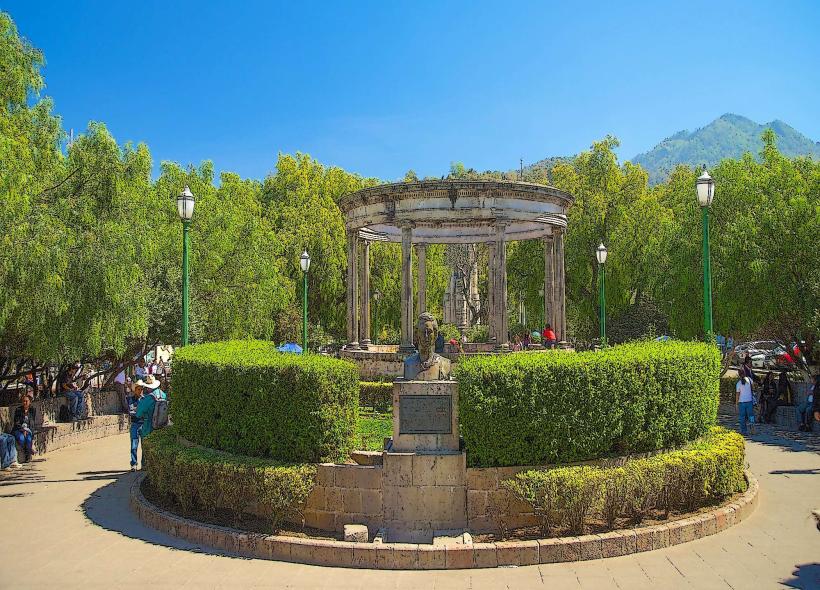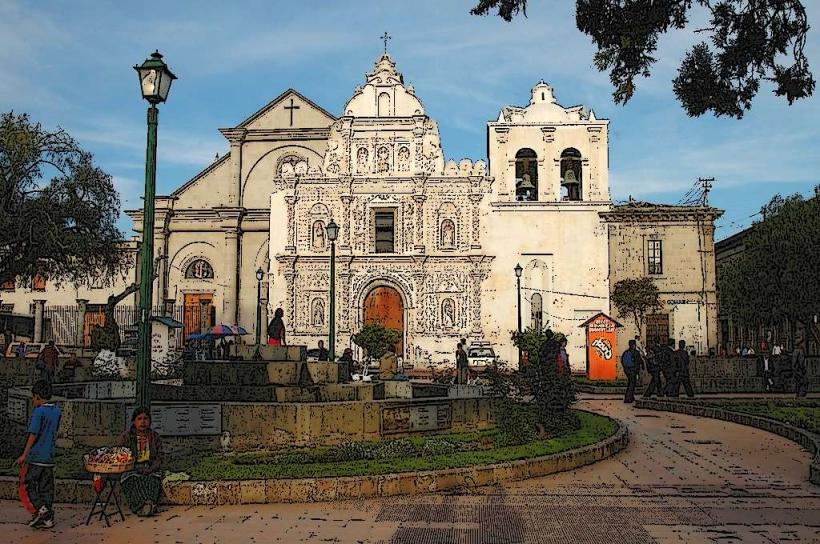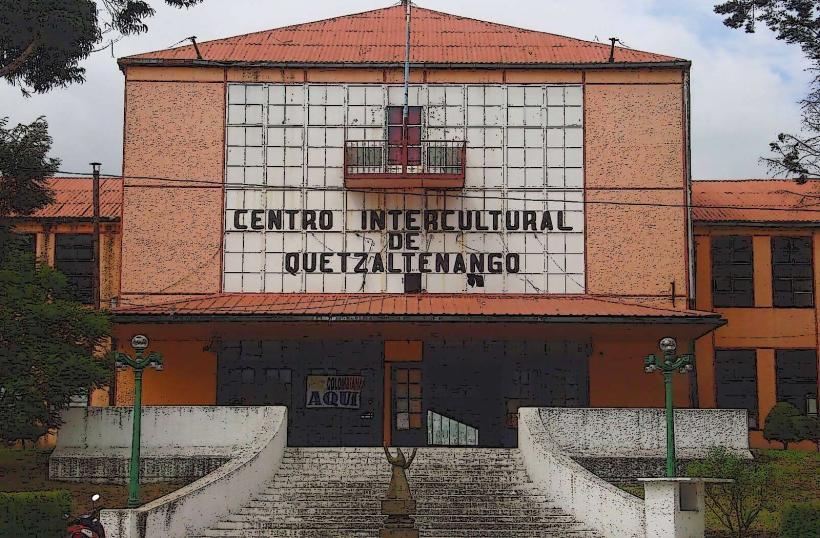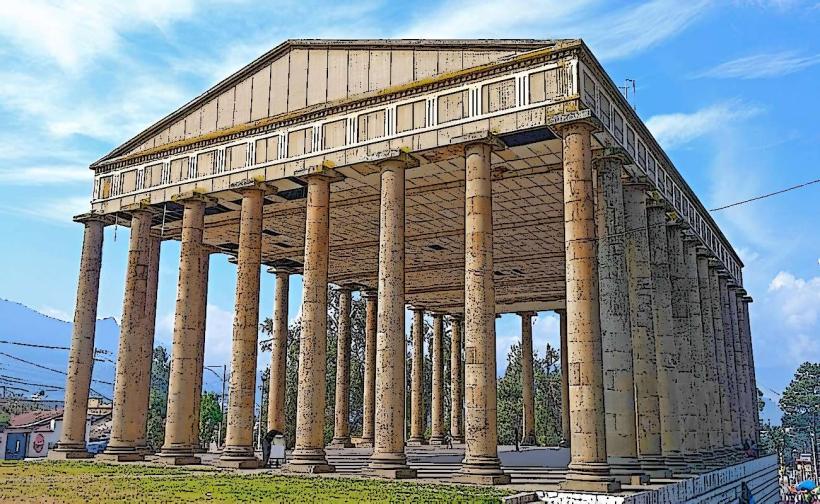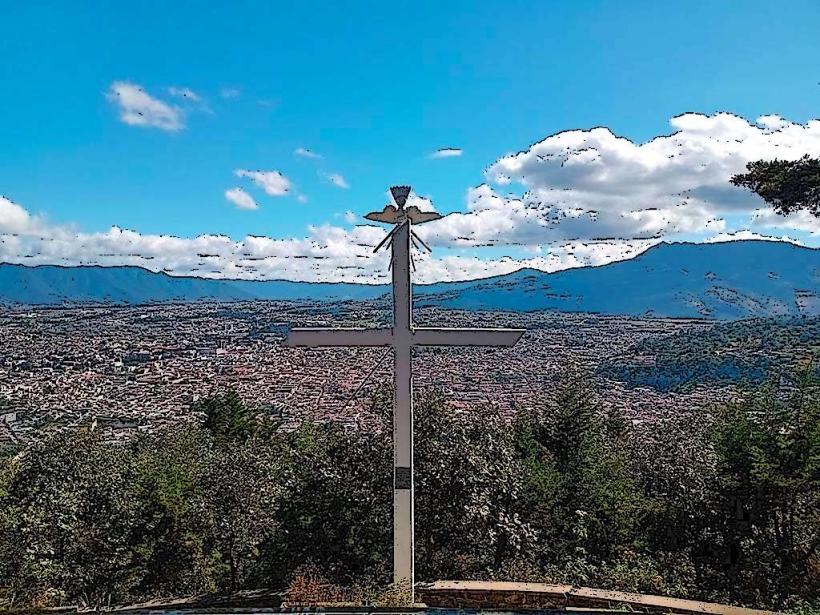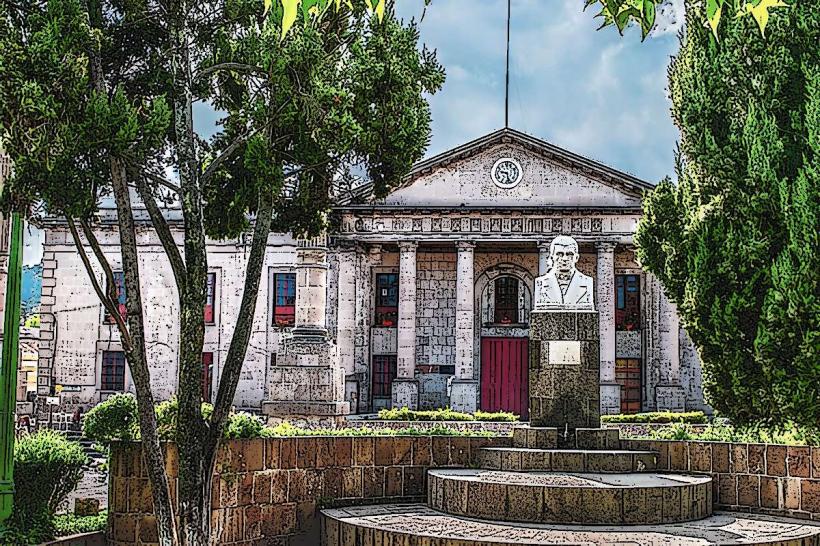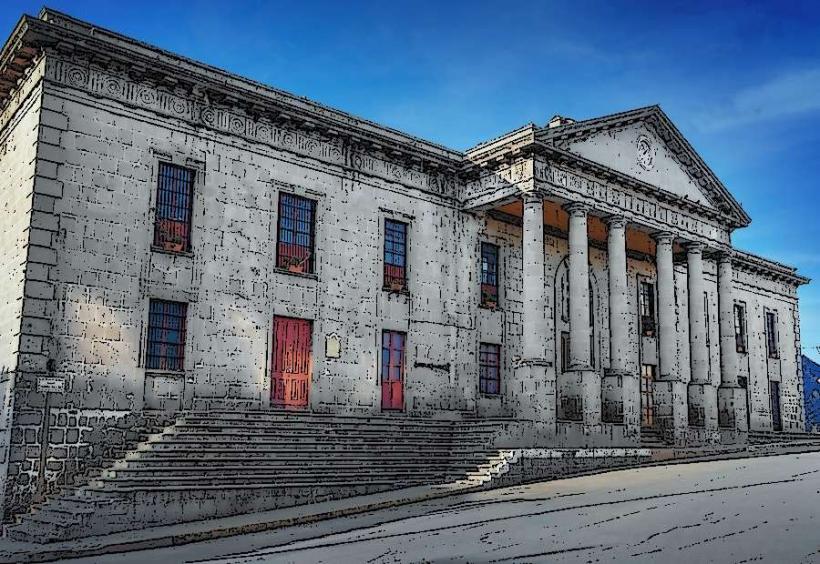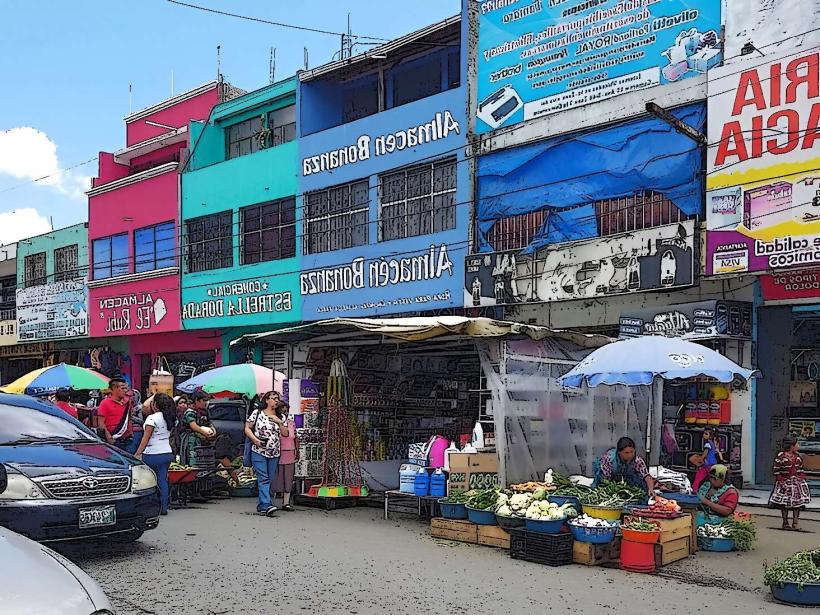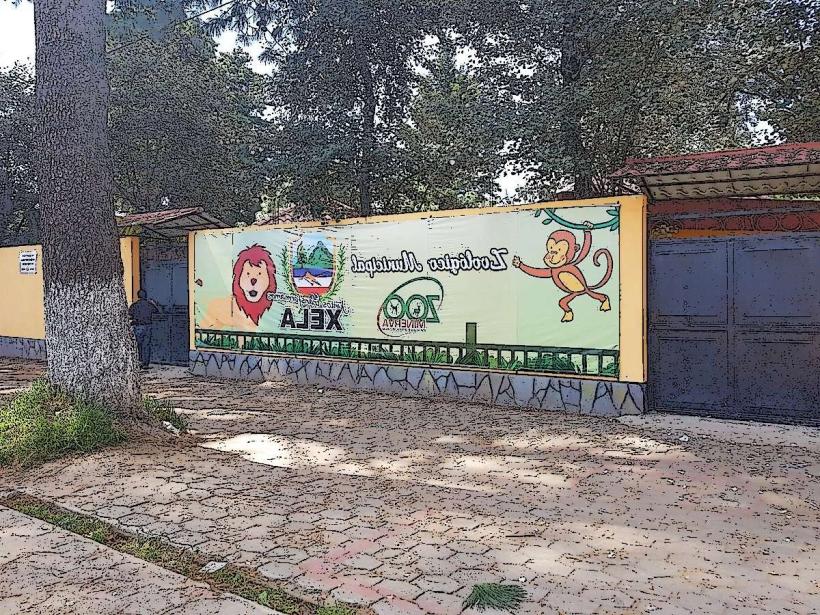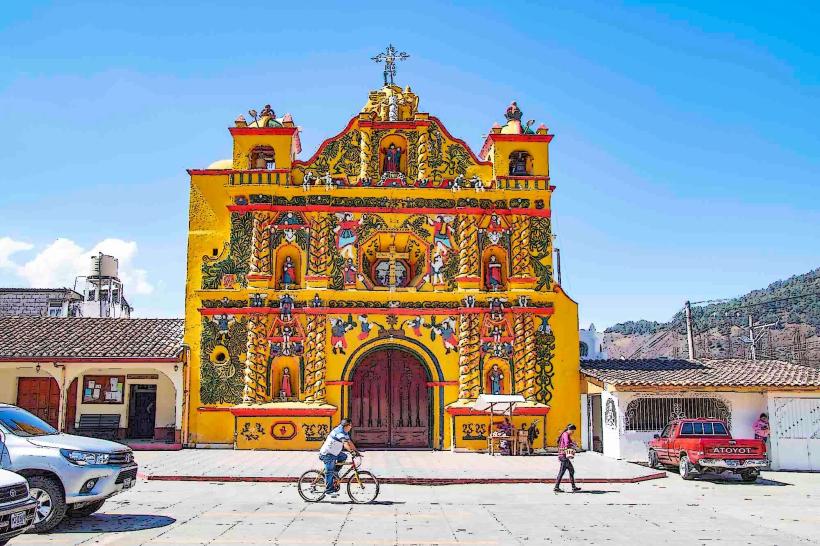Information
City: QuetzaltenangoCountry: Guatemala
Continent: North America
Quetzaltenango, often referred to as Xela (pronounced Sheh-lah), is the second-largest city in Guatemala, located in the western highlands of the country. It serves as the capital of the Quetzaltenango Department and is known for its rich history, cultural heritage, and stunning natural surroundings. Surrounded by volcanoes and mountains, it offers a mix of colonial architecture, indigenous culture, and modern development.
Geography and Climate
Quetzaltenango is situated at an altitude of approximately 2,300 meters (7,500 feet) above sea level, which gives it a cool and temperate climate. The city is surrounded by the Volcán Tajumulco, the highest volcano in Central America, and Volcán Santa María, among others. The landscape is characterized by valleys, mountains, and forests.
The climate is mild, with average temperatures ranging between 12°C and 20°C (54°F to 68°F) year-round, which makes it more temperate compared to the lowland areas of Guatemala. The rainy season lasts from May to October, with afternoon showers being common, while the dry season from November to April offers more pleasant, sunny weather.
History
Quetzaltenango has a rich history that dates back to pre-Columbian times when it was a major center of the K'iche' Maya civilization. The city’s name, Quetzaltenango, translates to "Place of the Quetzal," referring to the resplendent quetzal bird, a symbol of Guatemala. After the Spanish arrived in the 16th century, the city was renamed Xelajú, a derivative of its original K'iche' name, and became an important colonial city.
The city played a key role during the struggle for independence from Spain, and it was briefly the capital of the newly independent Guatemala in the 19th century. Quetzaltenango also experienced growth during the late 1800s and early 1900s, with the development of infrastructure, education, and industry. Today, the city retains much of its historical significance and serves as a cultural and commercial hub in the western highlands.
Urban Structure and Development
The city’s layout is marked by a mix of colonial-era buildings and modern infrastructure. The central area of Quetzaltenango is home to the main Plaza Central, where you can find key landmarks like the Catedral del Espíritu Santo (Cathedral of the Holy Spirit) and the Palacio Municipal (Municipal Palace), both reflecting the colonial architectural style.
The city has grown significantly in recent years, with expanding suburbs and commercial areas. Despite this growth, Quetzaltenango has managed to maintain its traditional character, and many neighborhoods still preserve the charm of historic buildings and cobblestone streets.
In terms of infrastructure, the city has developed in areas such as transportation, communication, and public services. However, like many rapidly growing cities, it faces challenges related to urbanization, such as traffic congestion and pollution.
Economy
Quetzaltenango is an important economic center in the western highlands of Guatemala. The city’s economy is driven by several key sectors:
- Agriculture: The region surrounding Quetzaltenango is fertile and produces coffee, vegetables, corn, and other crops. Coffee cultivation is particularly significant, and the area is known for its high-quality beans.
- Industry and Manufacturing: Quetzaltenango has a developing industrial sector that includes manufacturing, textiles, and food processing. Small factories and workshops are common in and around the city.
- Commerce: As a regional center, Quetzaltenango has a robust commercial sector. The city is home to local markets, retail stores, and a growing number of businesses catering to both residents and tourists.
- Tourism: While not as tourist-heavy as Antigua or Guatemala City, Quetzaltenango is a key destination for those interested in exploring Guatemala's highlands. The city's colonial architecture, the nearby Lake Atitlán, and the surrounding volcanic landscape attract visitors, particularly those interested in hiking, cultural heritage, and indigenous traditions.
Demographics and Culture
Quetzaltenango is a culturally diverse city, with a population of around 250,000 people. The population is primarily indigenous K'iche' Maya, with many residents speaking both K'iche' and Spanish. The city serves as a cultural hub for the K'iche' people and other indigenous groups in the region.
The indigenous heritage is evident in the city’s daily life, with traditional clothing, language, and customs being integral to the local culture. Many festivals, events, and markets in Quetzaltenango reflect the indigenous influence, and local communities often celebrate traditional Maya rituals alongside Catholic holidays.
The cultural scene in Quetzaltenango is vibrant, with theaters, museums, and art galleries showcasing both contemporary and traditional Guatemalan art. Teatro Municipal is a central venue for music and performing arts, and Centro Cultural Casa de la Cultura is home to exhibitions and cultural activities.
Tourism and Attractions
Quetzaltenango offers a range of attractions for visitors. Some of the most notable include:
- Volcán Tajumulco: The highest peak in Central America, offering a challenging yet rewarding hike for adventurous travelers. The summit provides stunning views of the surrounding highlands and beyond.
- Lake Atitlán: Located about an hour and a half from Quetzaltenango, Lake Atitlán is one of the most beautiful lakes in the world, surrounded by volcanoes and picturesque villages.
- Parque Central: The main park in Quetzaltenango, surrounded by historical buildings and cafes. It’s a great spot to relax and soak in the city’s atmosphere.
- Catedral del Espíritu Santo: The city's cathedral located on the central plaza, showcasing colonial architecture.
- Museo Ixkik’: A museum that offers insights into the cultural history of the K'iche' Maya people.
Transportation
Quetzaltenango is well-connected to other parts of Guatemala. The city is located at a strategic crossroads, making it an important transit hub for travelers heading to other destinations in the western highlands and the Guatemalan border with Mexico.
- Roads: Quetzaltenango is accessible by car and bus, with highways connecting it to Guatemala City, Lake Atitlán, and other major cities.
- Public Transportation: Buses and shuttle services are available throughout the city and surrounding areas, although traffic congestion can be an issue at times.
- Airport: Quetzaltenango is served by the Aeropuerto Internacional de Quetzaltenango, a small international airport offering flights to and from other parts of Central America.
Social and Security Situation
While Quetzaltenango is generally considered safe for locals and tourists alike, certain areas may experience occasional crime, as is common in many urban centers. It is advisable to remain aware of your surroundings, especially when walking in less busy or poorly lit areas.
Healthcare in Quetzaltenango is relatively good, with several hospitals and clinics available. The Hospital Regional de Occidente is the largest public hospital, while private healthcare options are also available.
Environmental Concerns
The region around Quetzaltenango is rich in biodiversity and natural beauty, though it faces environmental challenges, including:
- Deforestation: Expansion of agriculture and urban development can lead to deforestation in the surrounding mountains and valleys.
- Water Supply: As with many highland areas, water management is an ongoing challenge, particularly in rural regions where access to clean water may be limited.
- Pollution: Quetzaltenango, like other urban centers, struggles with waste management and pollution, particularly in areas with high population density.
Conclusion
Quetzaltenango is a city where history, culture, and nature converge. With its colonial charm, indigenous heritage, and surrounding volcanic landscapes, it offers a unique experience for visitors interested in exploring Guatemala’s highlands. While it is not as widely visited as other destinations in the country, it is an essential location for understanding Guatemala’s indigenous cultures, historical significance, and natural beauty.

